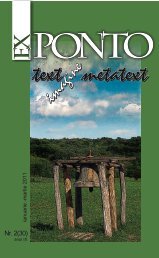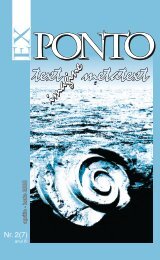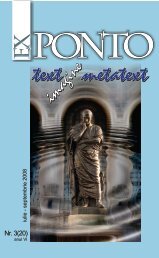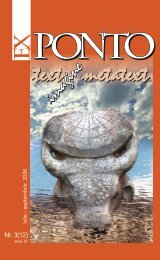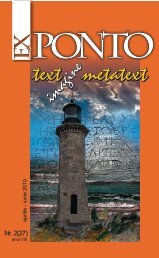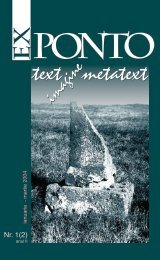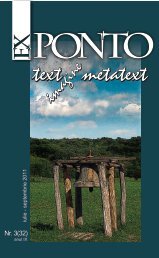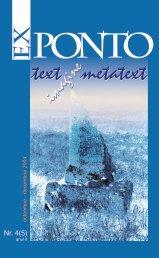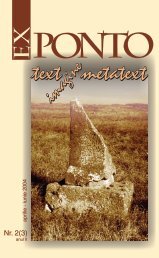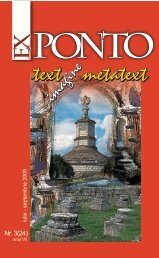Nr. 4 (21) anul VI / octombrie-decembrie 2008 - ROMDIDAC
Nr. 4 (21) anul VI / octombrie-decembrie 2008 - ROMDIDAC
Nr. 4 (21) anul VI / octombrie-decembrie 2008 - ROMDIDAC
Create successful ePaper yourself
Turn your PDF publications into a flip-book with our unique Google optimized e-Paper software.
aspecte ale identit`]ii<br />
ILEANA MARIN<br />
I<br />
Romanians as Potential Americans or<br />
Looking at/for the Others’ Identity<br />
To see ourselves as others see us!<br />
(Robert Burns, To a Louse: On Seeing<br />
one in a Lady’s Bonnet at Church)<br />
n the second half of the nineteenth century, national identities were the<br />
cultural, social, and ideological stimuli for national state formation all<br />
over Europe. While on the old continent major ethnic groups functioned<br />
as catalysts of affirmation of national rights and wars of independence,<br />
the United States faced a record number of emigrants struggling to<br />
adapt to their new environment. Among those groups of immigrants,<br />
the Romanians represented a part with only one visually obvious sign<br />
of their identity, their folk costumes. At the beginning of the twentieth<br />
century, another aspect was attached to the Romanian identity by means<br />
of the presence of Romanian artists in the cultural centers of the USA.<br />
The most famous was Constantin Brâncu[i who became known to the<br />
American art public as a participant in the well-publicized controversy in<br />
modern art and also as a plaintiff against the US customs authorities.<br />
The Romanian Folk Costume<br />
There was a coincidence between the highest peak of Romanian<br />
immigration to the United States and the interest of American magazines<br />
in the Romanian monarchy, whose humanistic achievements brought<br />
Romanian identity into focus at the end of the nineteenth century. In<br />
spite of the fact that the Romanian immigrants came from Transylvania,<br />
Banat, and Bucovina, provinces which were under the rule of the Austrian-<br />
Hungarian Empire at that time, they brought with them their Romanian<br />
heritage as a mark of their freedom. Since their main reasons for leaving<br />
their native places were political, ethnic, and religious persecution,<br />
they could finally introduce themselves as Romanians without any<br />
consequences. The pictures taken at the Ellis Island Immigration Station<br />
from 1898 to 1914 show them dressed up in their national costumes. 1<br />
Interestingly enough, Romanians, who were used to wearing their highly<br />
embroidered costumes on very important occasions, put them on for<br />
disembarking on American soil. They surely considered this as one such<br />
occasion. It is obvious that they put on their best clothes to honor the event<br />
EX PONTO NR.4, <strong>2008</strong><br />
109




